Running for his third presidential term, Franklin Roosevelt made a 1940 campaign promise to allow the training of black military pilots. In cooperation with the Tuskegee Institute in Alabama, the Army in 1941 created a program to induct and train what would eventually amount to more than 14,000 airmen, of whom about 1,000 would become pilots; the others became navigators, bombardiers, radio operators, administrators, weathermen, and other support personnel. Collectively, these “Tuskegee Airmen” built a solid combat record. Click here to check out Air Force Magazine‘s complement to the photoessay on the Tuskegee Airmen, which appears in our March print issue.
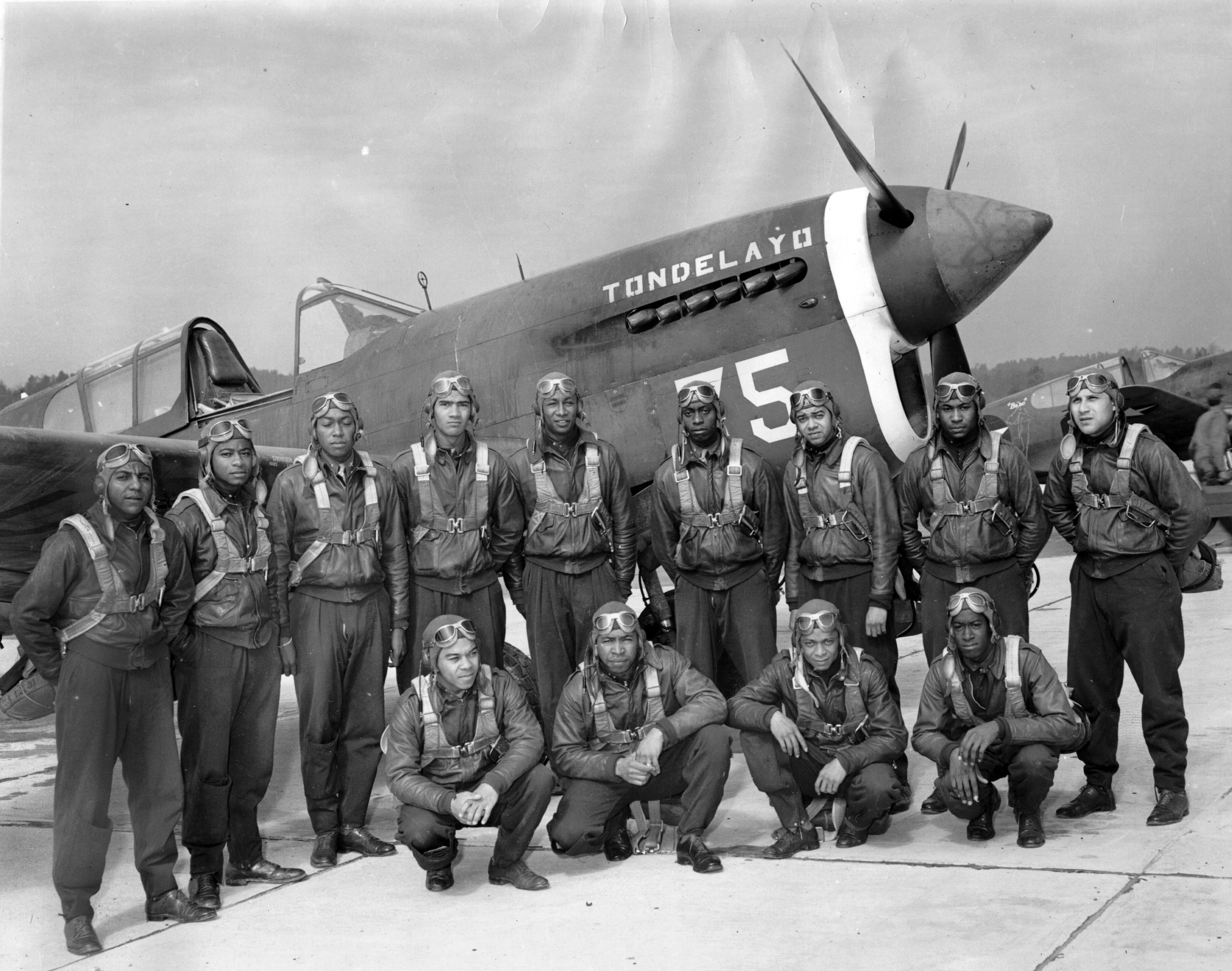
The group that became known as Tuskegee Airmen began when the 99th Pursuit Squadron was formed 75 years ago this month at Chanute Field, Ill. This photo is of Pilot Class 43-C at Tuskegee AAF, Ala., taken in 1943. The success of the Tuskegee Airmen at flying and fighting with a variety of combat aircraft in World War II paved the way for racial integration of the armed forces.
March print issue. All photos from USAF, the Air Force Historical Research Agency, and Toni Frissell via the Library of Congress.
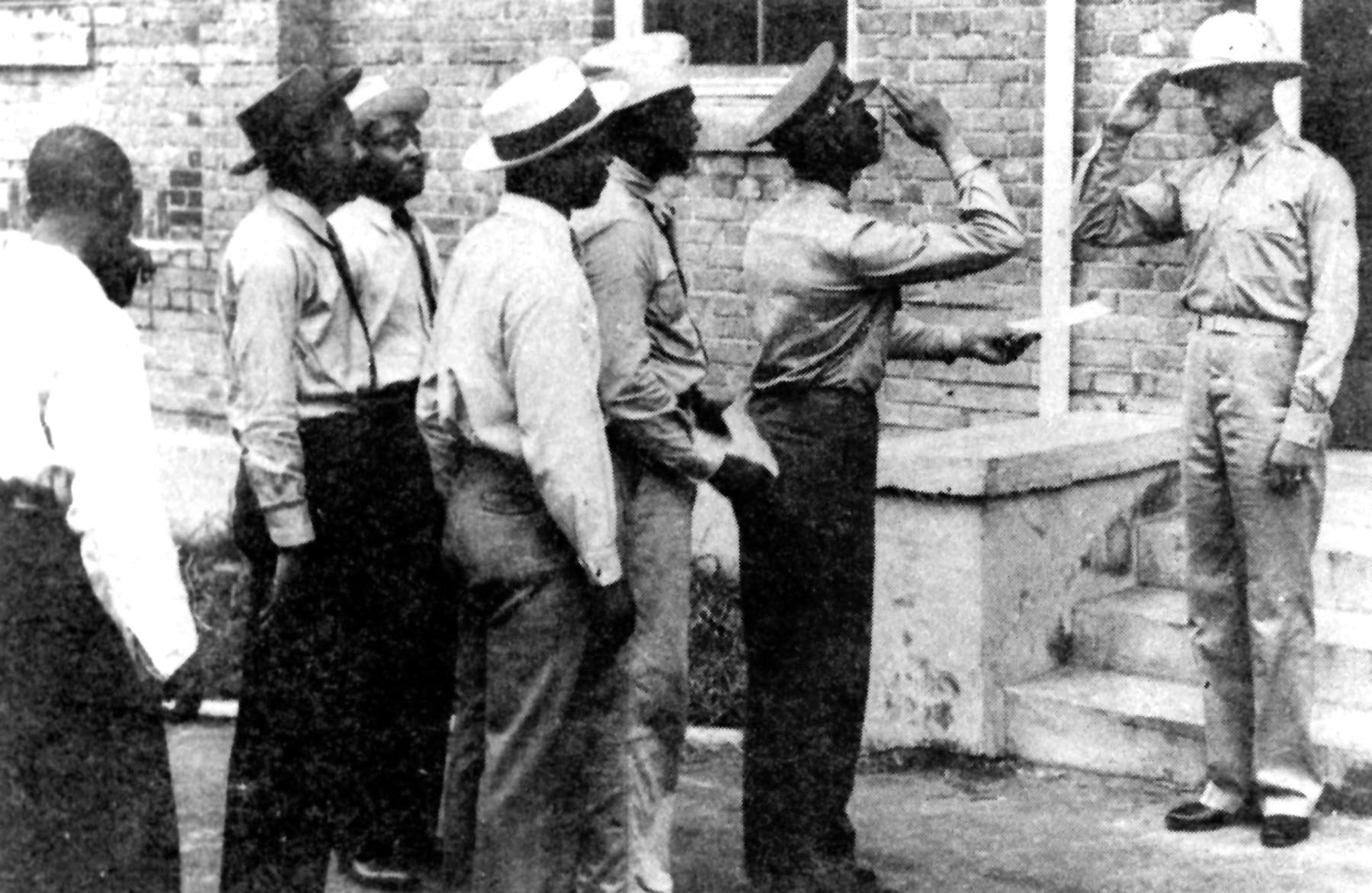
Then-Capt. Benjamin Davis Jr. welcomes some of the first black aviation cadets at Tuskegee. The college landed the contract to host the enterprise because it already had a program to train black civilian pilots, had an airfield, and enjoyed generally good flying weather. Early pilot candidates had to be college graduates, but as the war went on, high school graduates were accepted, then given some college-level instruction before becoming aviation cadets. Less than half of the more than 2,000 pilot candidates who began the training completed the program and earned their Army Air Forces wings.
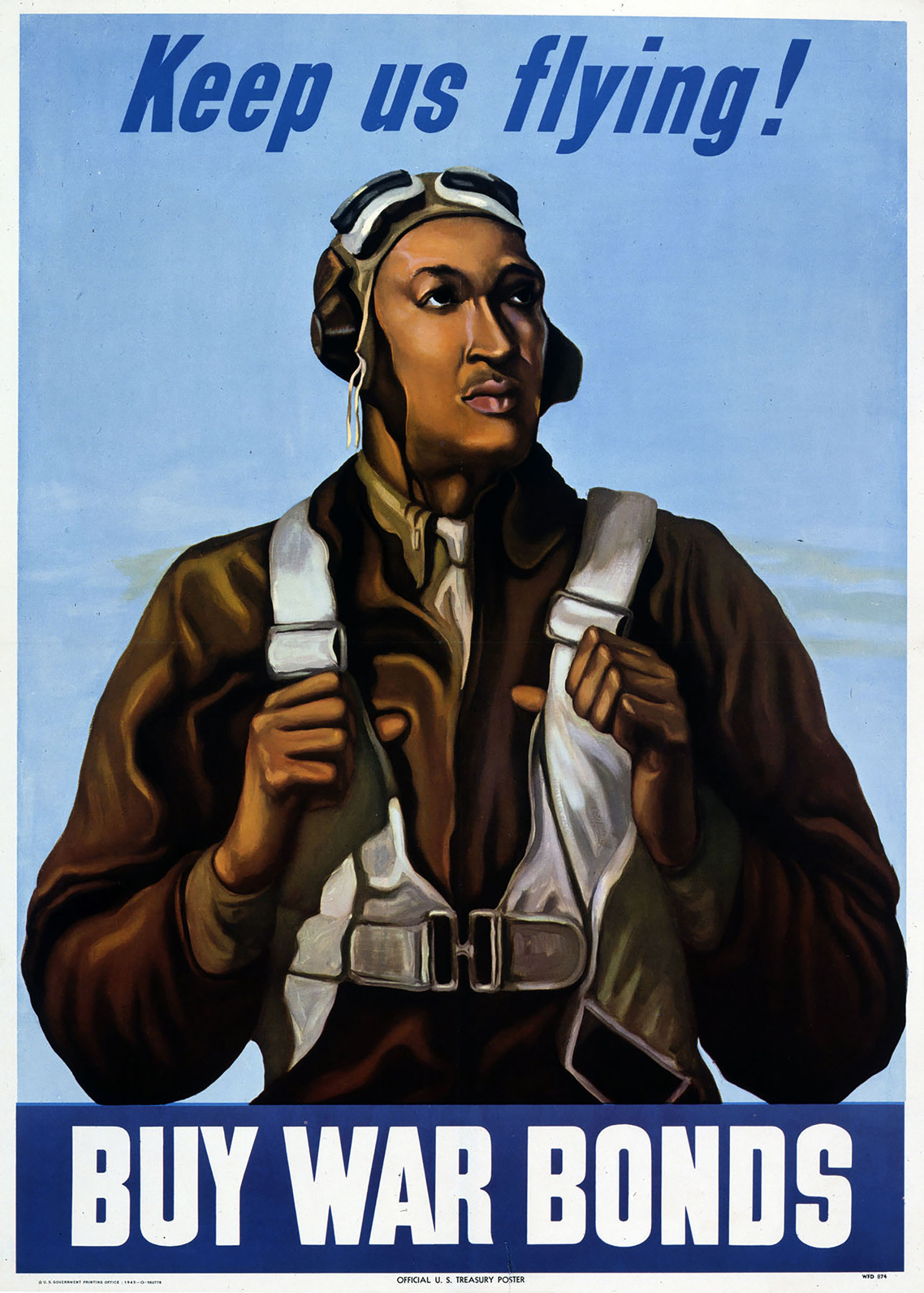
This 1943 poster was not just a promotional ad but served as a symbol of pride in the African-American contribution to the war effort.
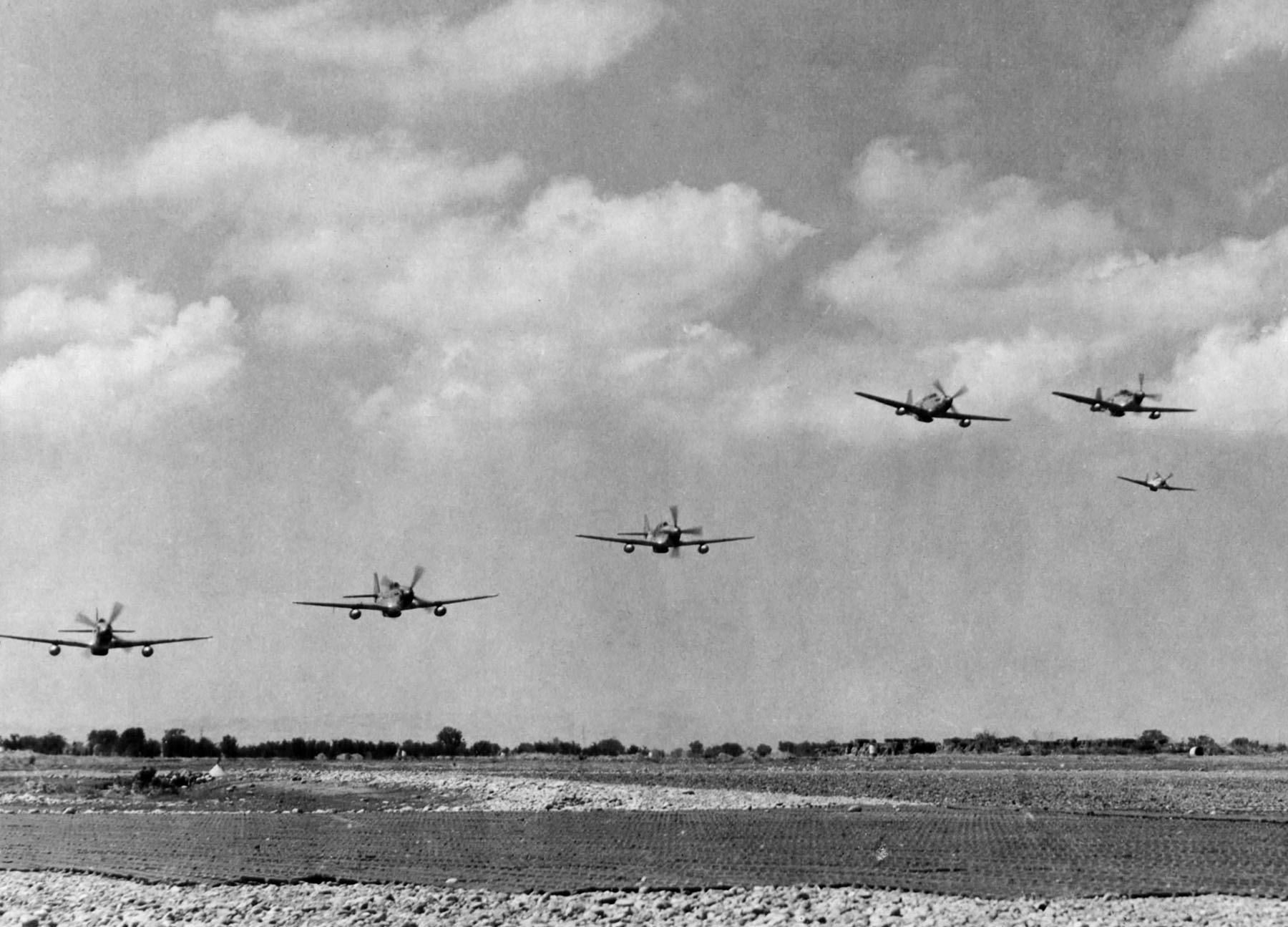
“Red Tail” P-51s of the 332nd Fighter Group take off on a bomber-escort mission in August 1944. Black units flew P-39s, P-40s, P-47s, P-51s, and B-25 Mitchell bombers, but the bomber crews did not see combat. The Tuskegee units saw their first combat in North Africa, then moved to bases in Sicily and then to the mainland of Italy.
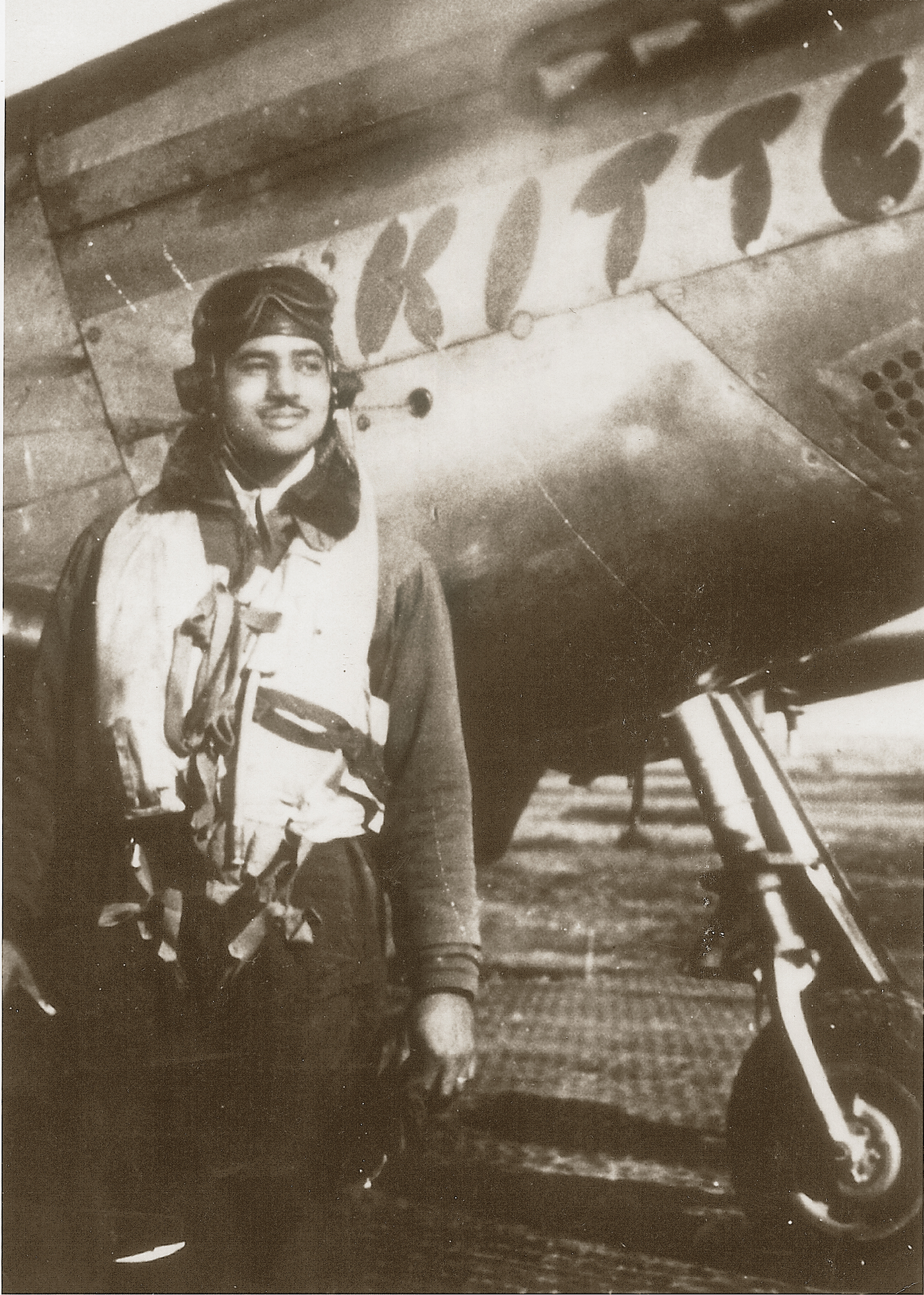
Charles McGee—now a retired colonel—named his P-51 Kitten, a nickname for his wife.
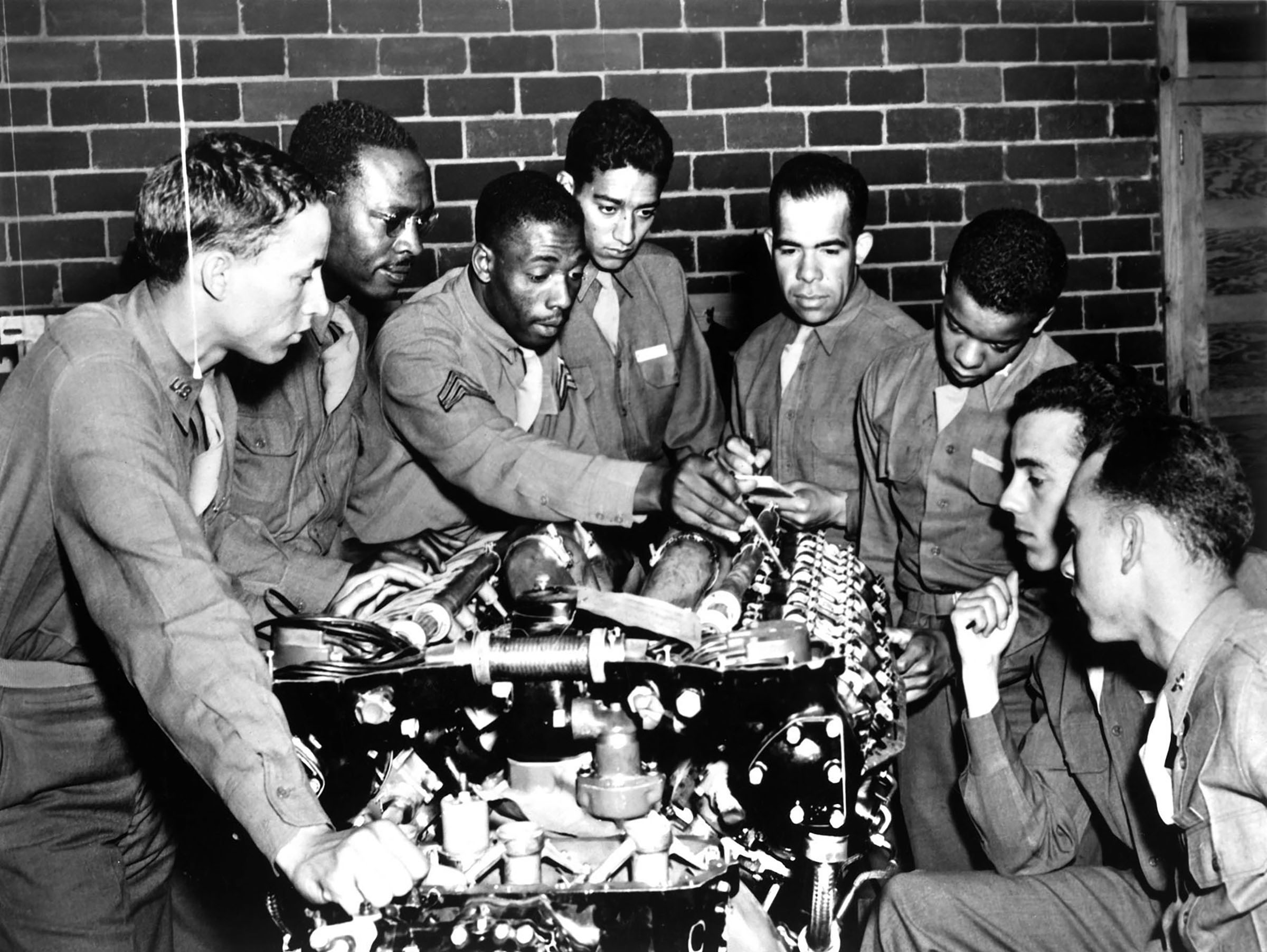
White aviation cadets and black maintenance students receive instruction on a P-40’s Allison engine. Though referred to as the Tuskegee program, instruction in maintenance and flying was performed at a number of bases and facilities in the Southeast US.
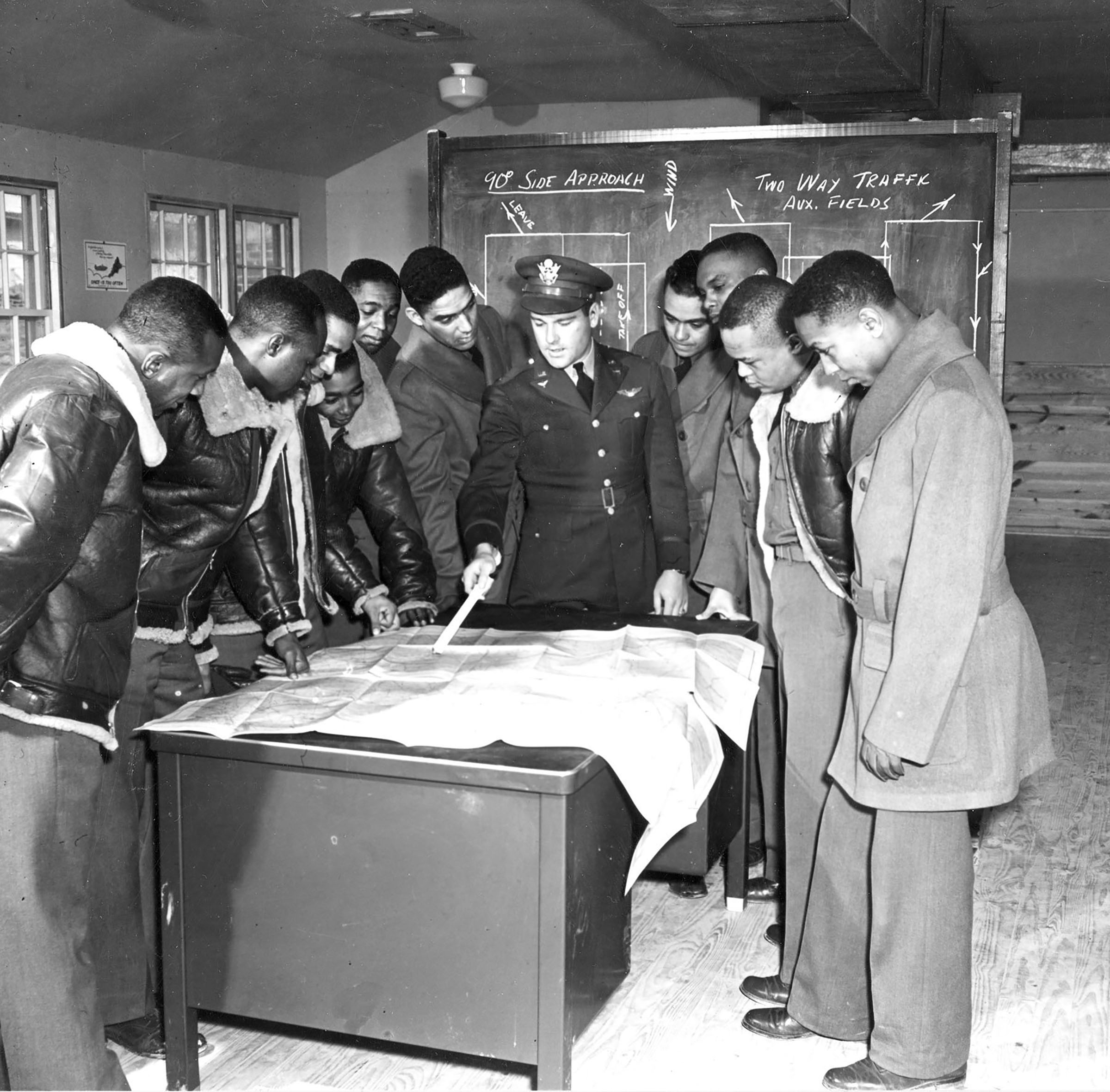
The Tuskegee program started with white instructors and commanders, but these positions were eventually taken over by blacks with combat experience.
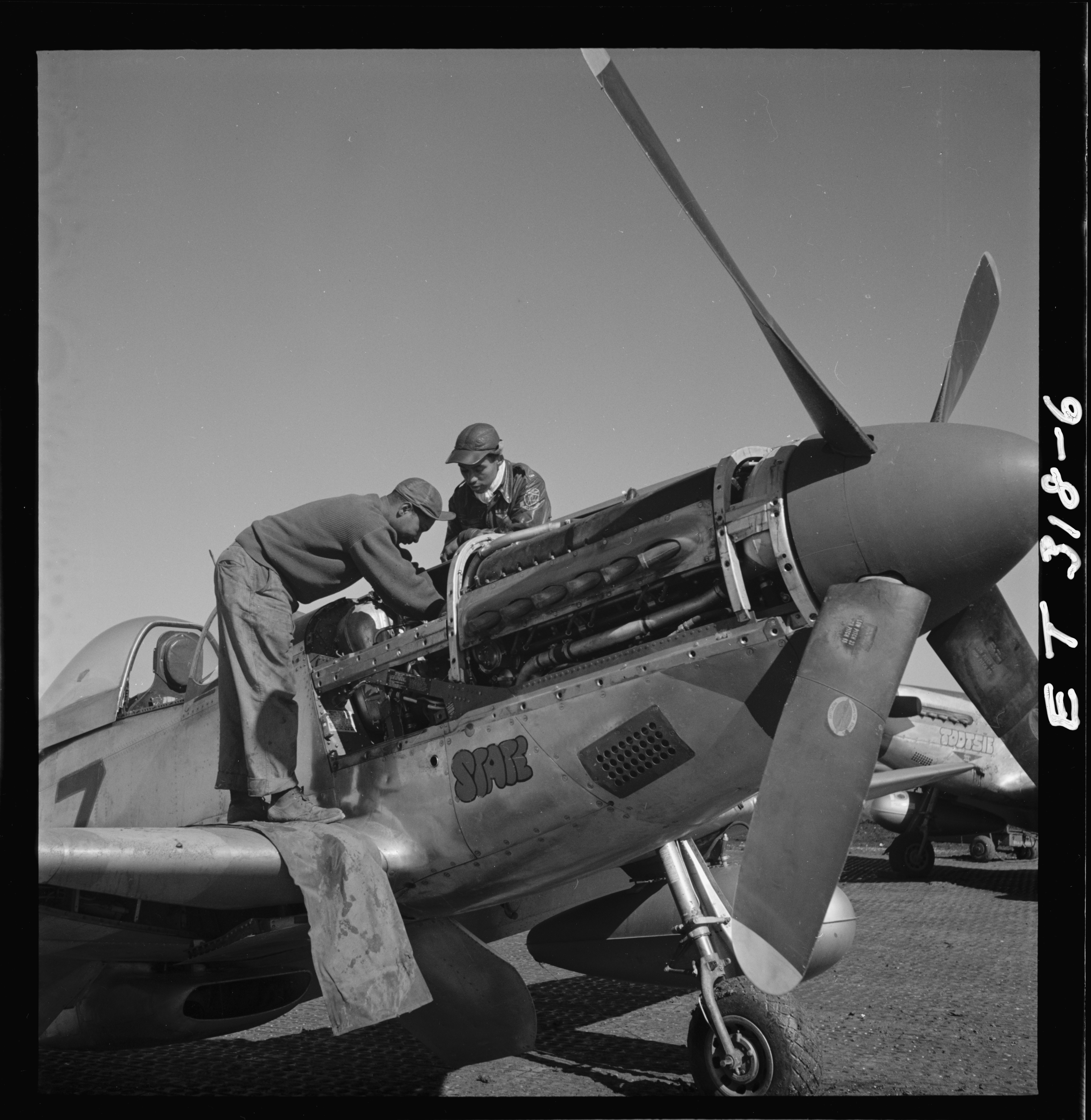
Marcellus Smith of Louisville, Ky., and Roscoe Brown of New York work on a P-51’s Merlin engine.
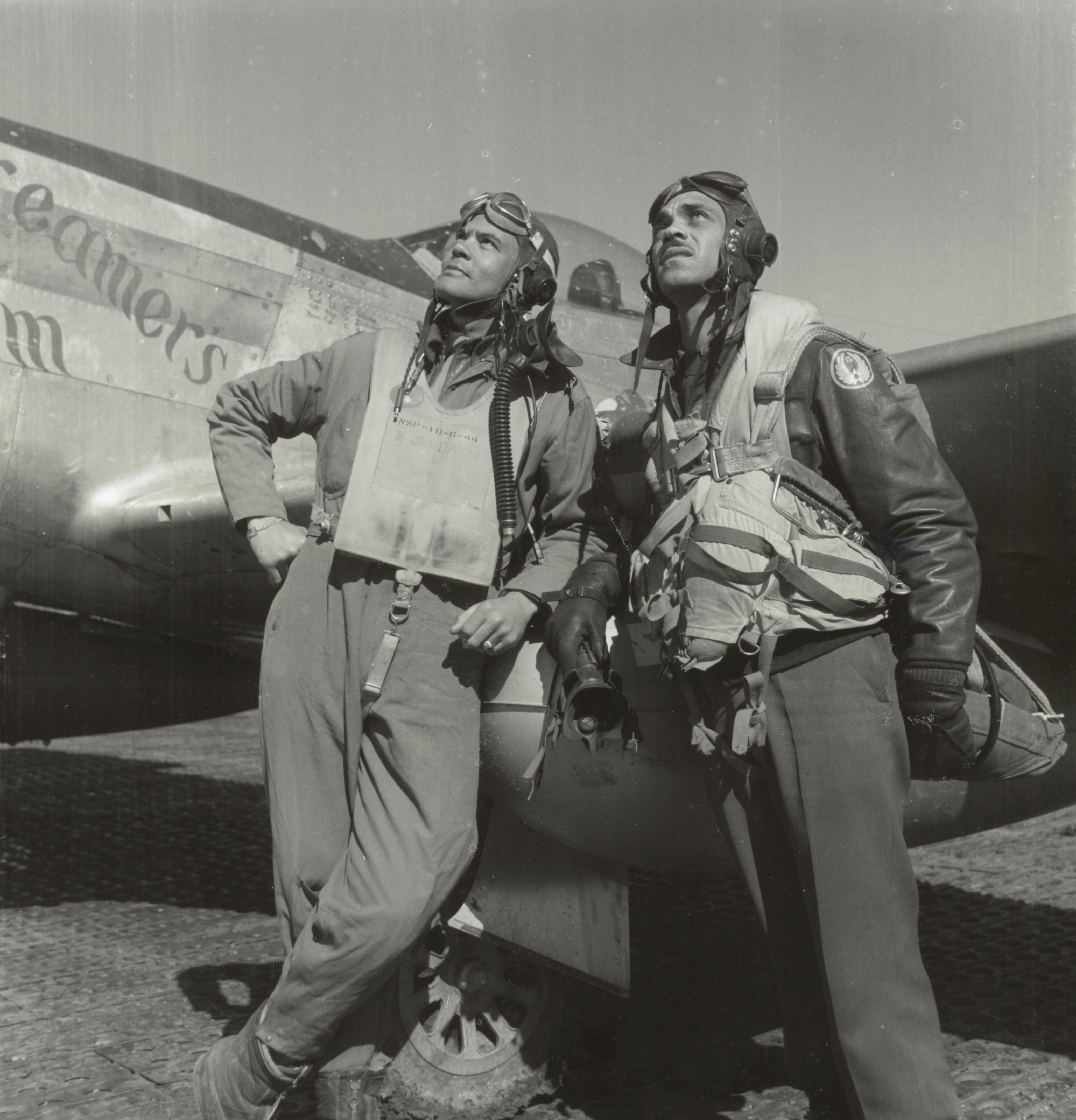
Davis, commanding officer of the 332nd FG, with Edward Gleed, operations officer. They were photographed at the unit’s Ramitelli, Italy, base.
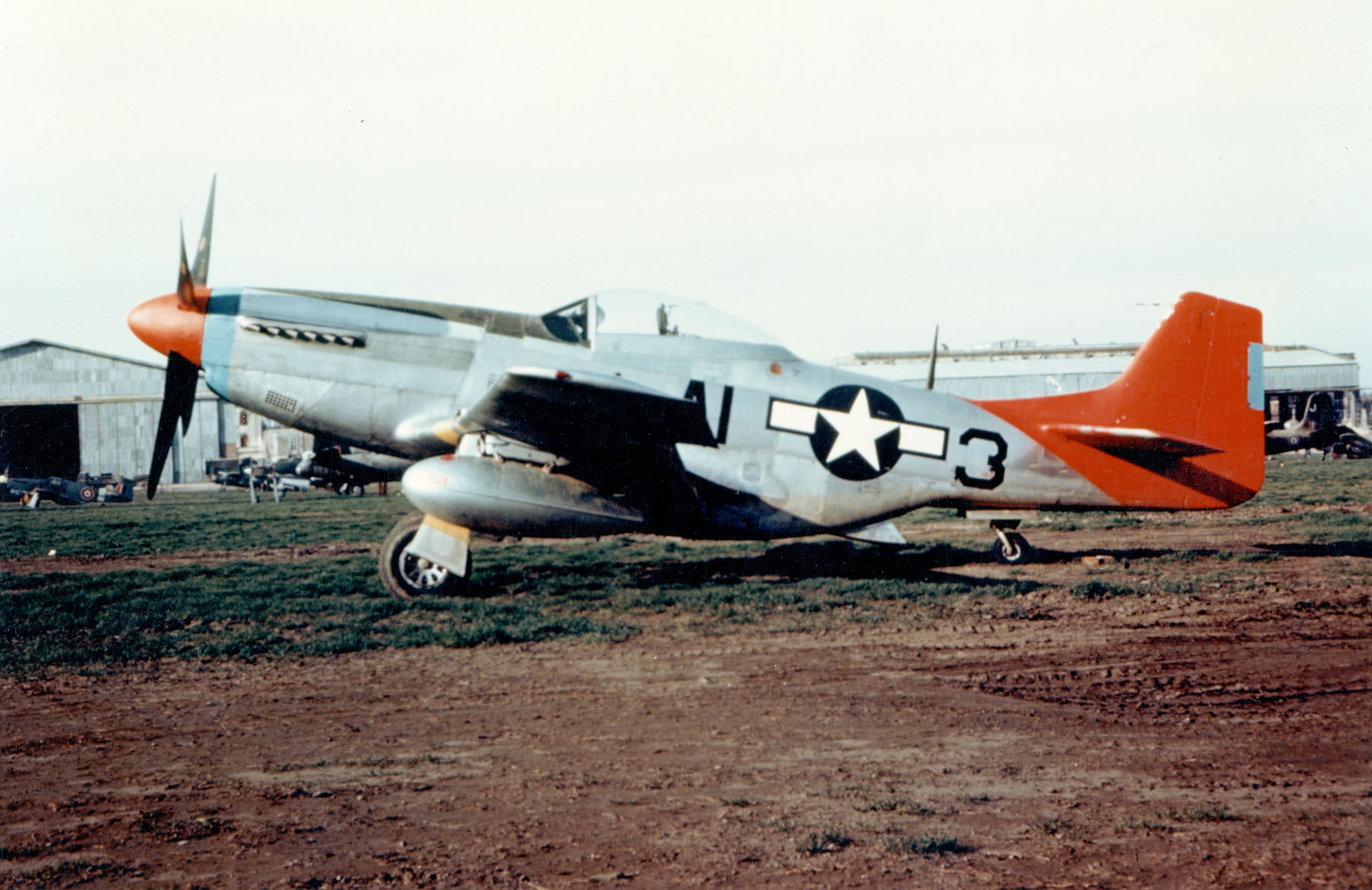
The iconic red tail identified P-51s of the 332nd FG. The 332nd was the second Tuskegee unit to see battle, following the 99th Fighter Squadron, which merged into it. Although often credited with never having lost a bomber to enemy fighters, in reality some 27 Tuskegee-escorted bombers were shot down—still significantly fewer than other escort groups in Fifteenth Air Force.
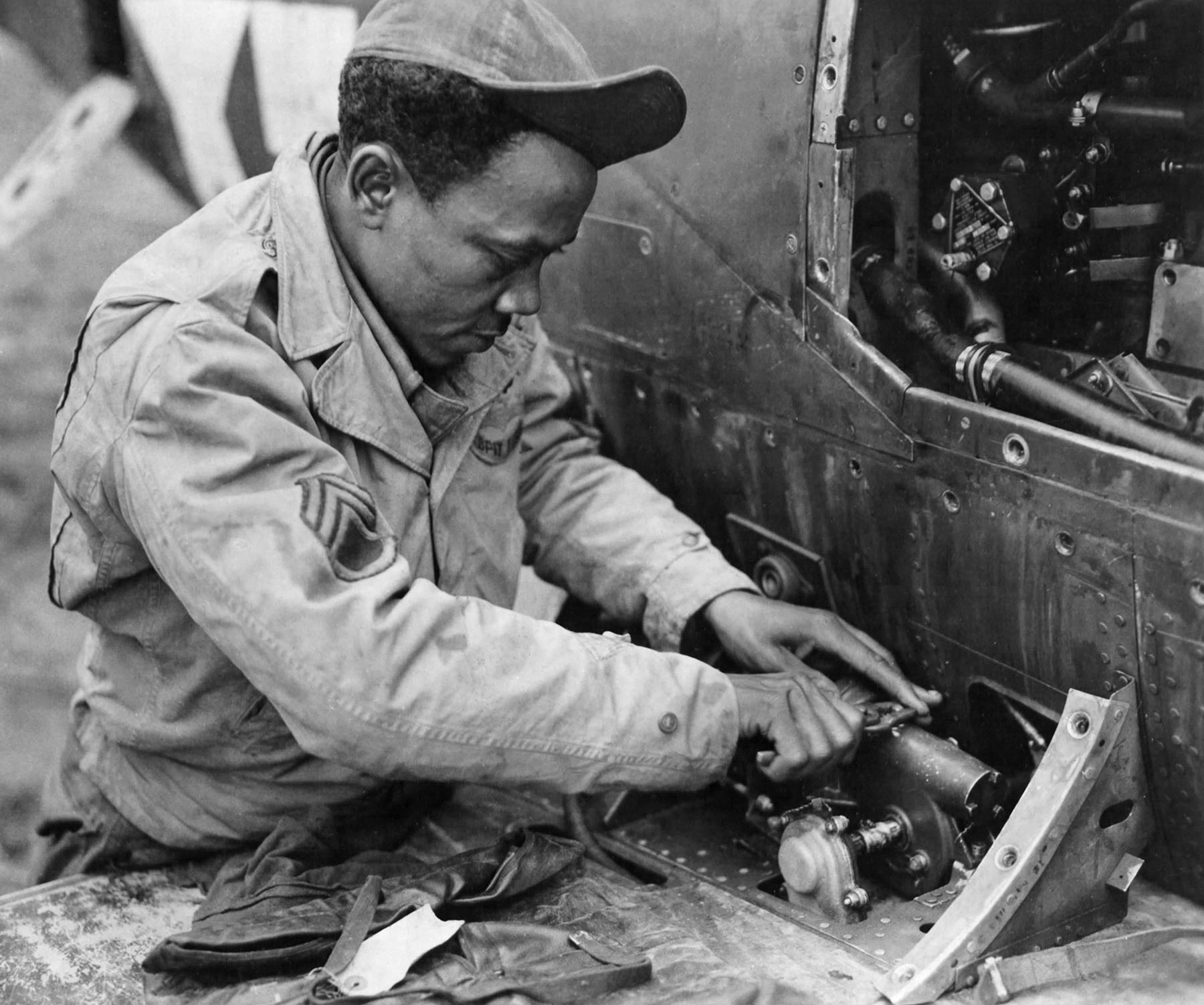
SSgt. James McGee working in Italy on a P-39 Airacobra.
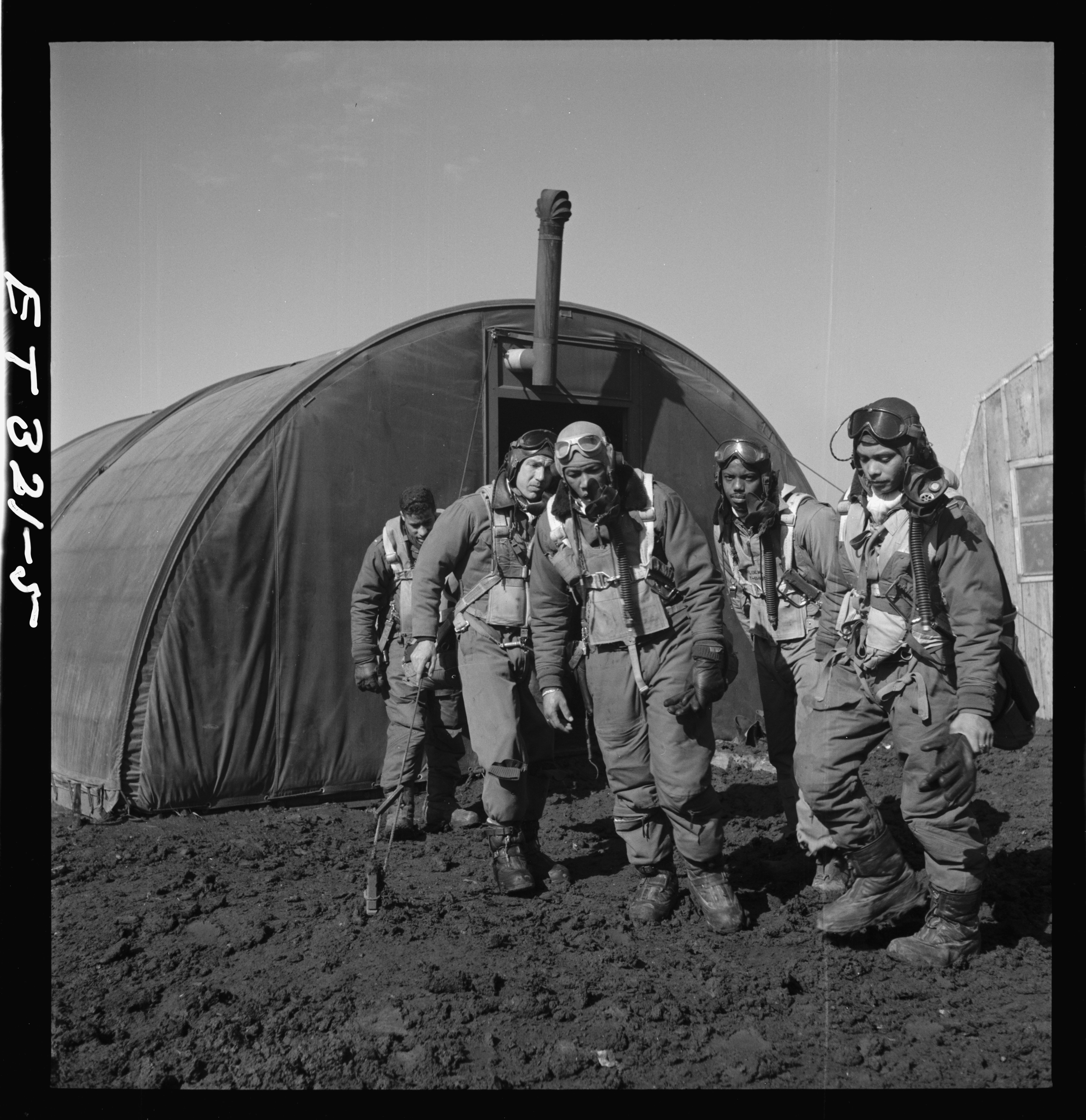
Tuskegee Airmen leaving a parachute hut in Ramitelli.
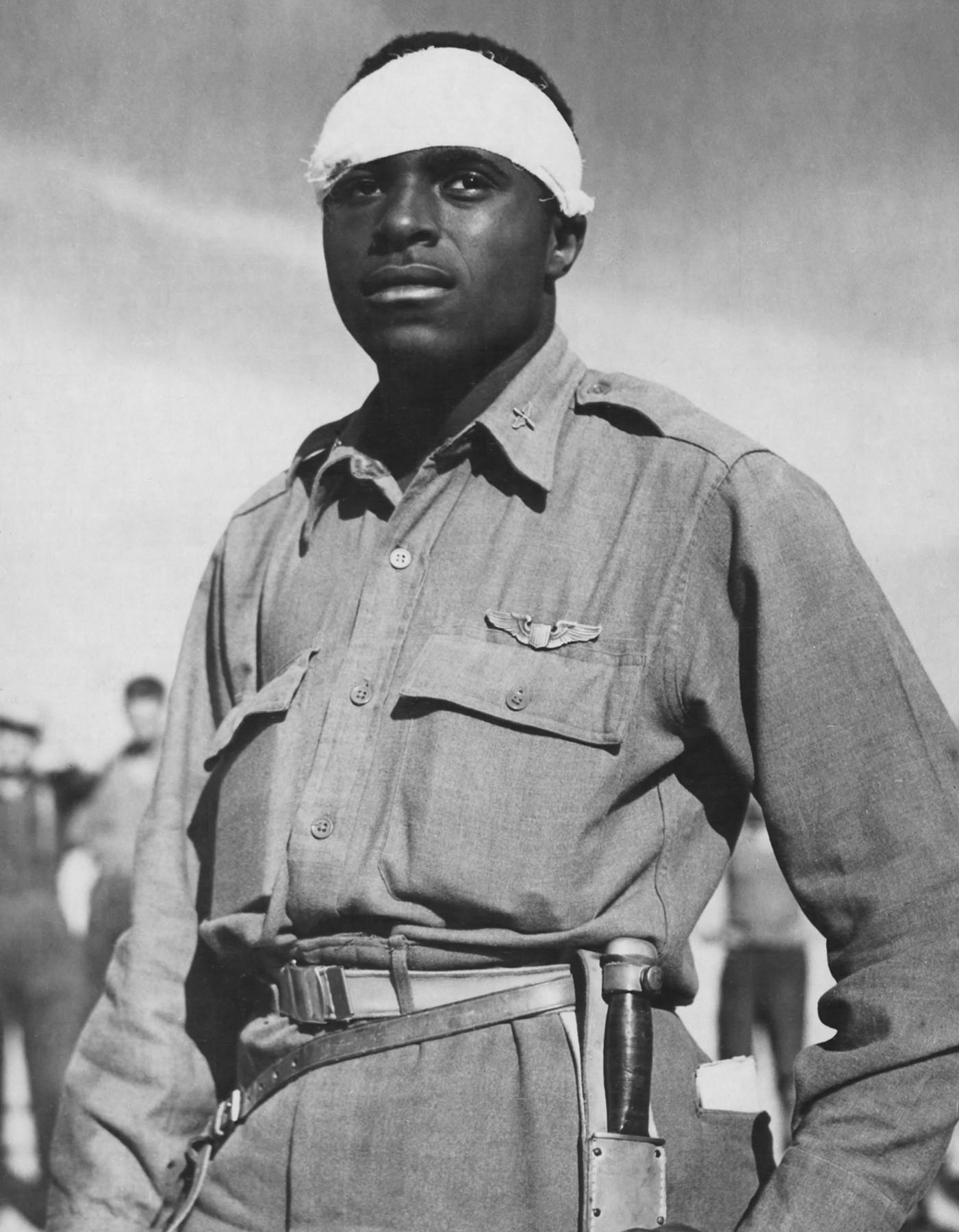
Second Lt. Andrew Marshall was brought down by flak while flying over Greece on Oct. 6, 1944. Partisans hid Marshall from German troops and helped him get back to his squadron.
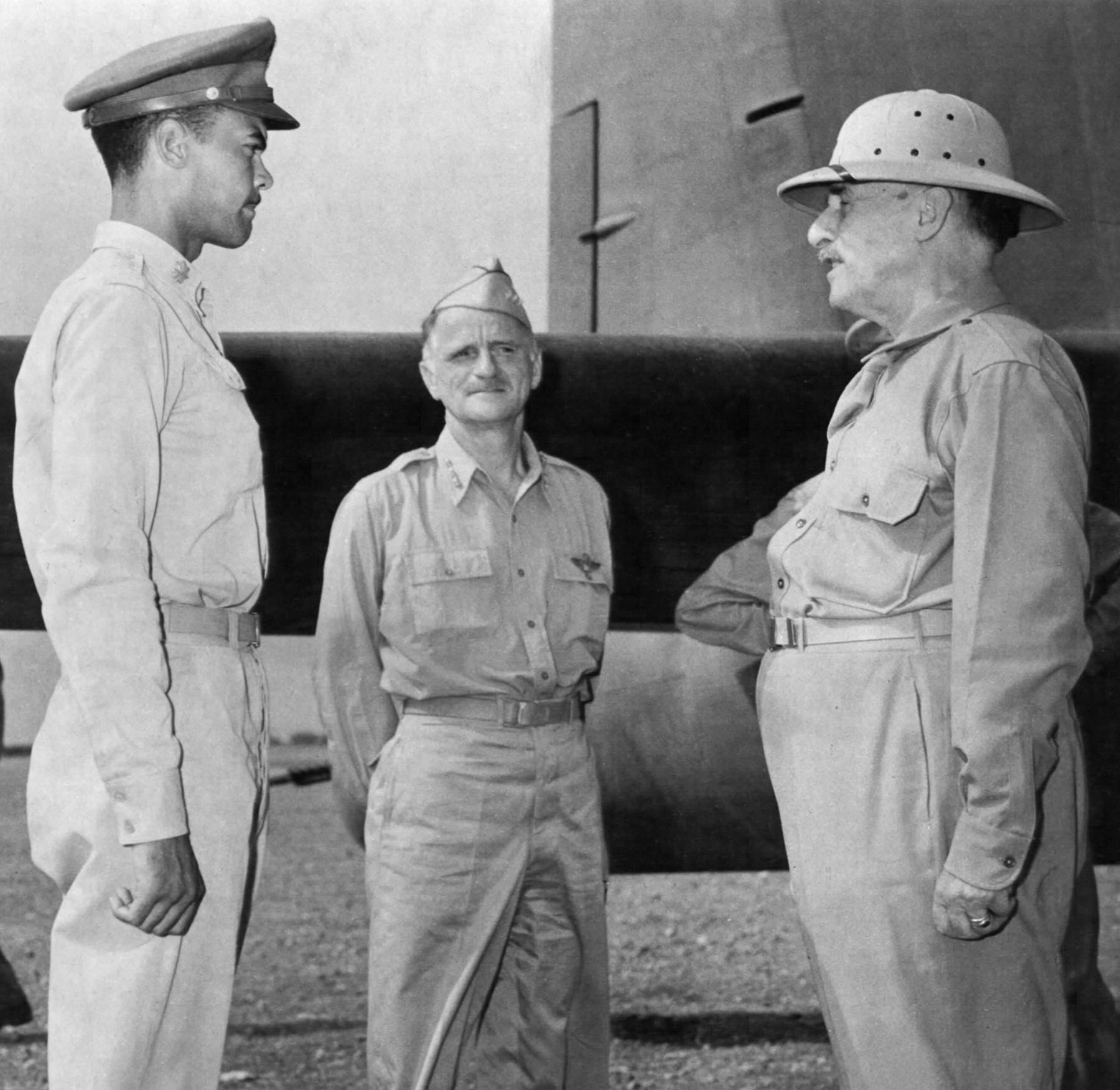
During the African campaign, Davis, then commander of the 99th FS, met with Mediterranean Allied Air Forces chief Lt. Gen. Carl A. “Tooey” Spaatz and Secretary of War Henry Stimson (l-r).
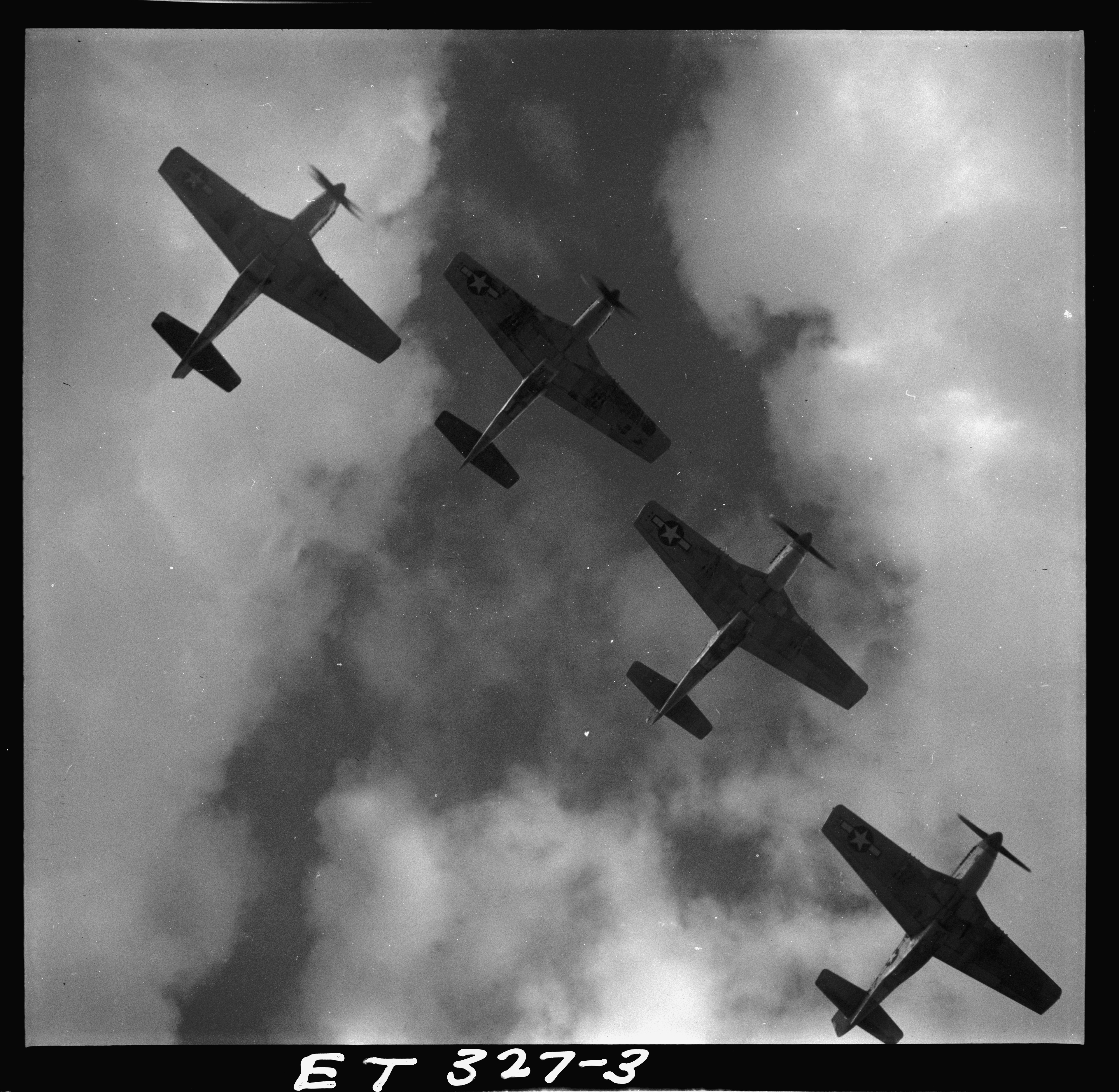
Four Ramitelli-based Red Tails in formation.
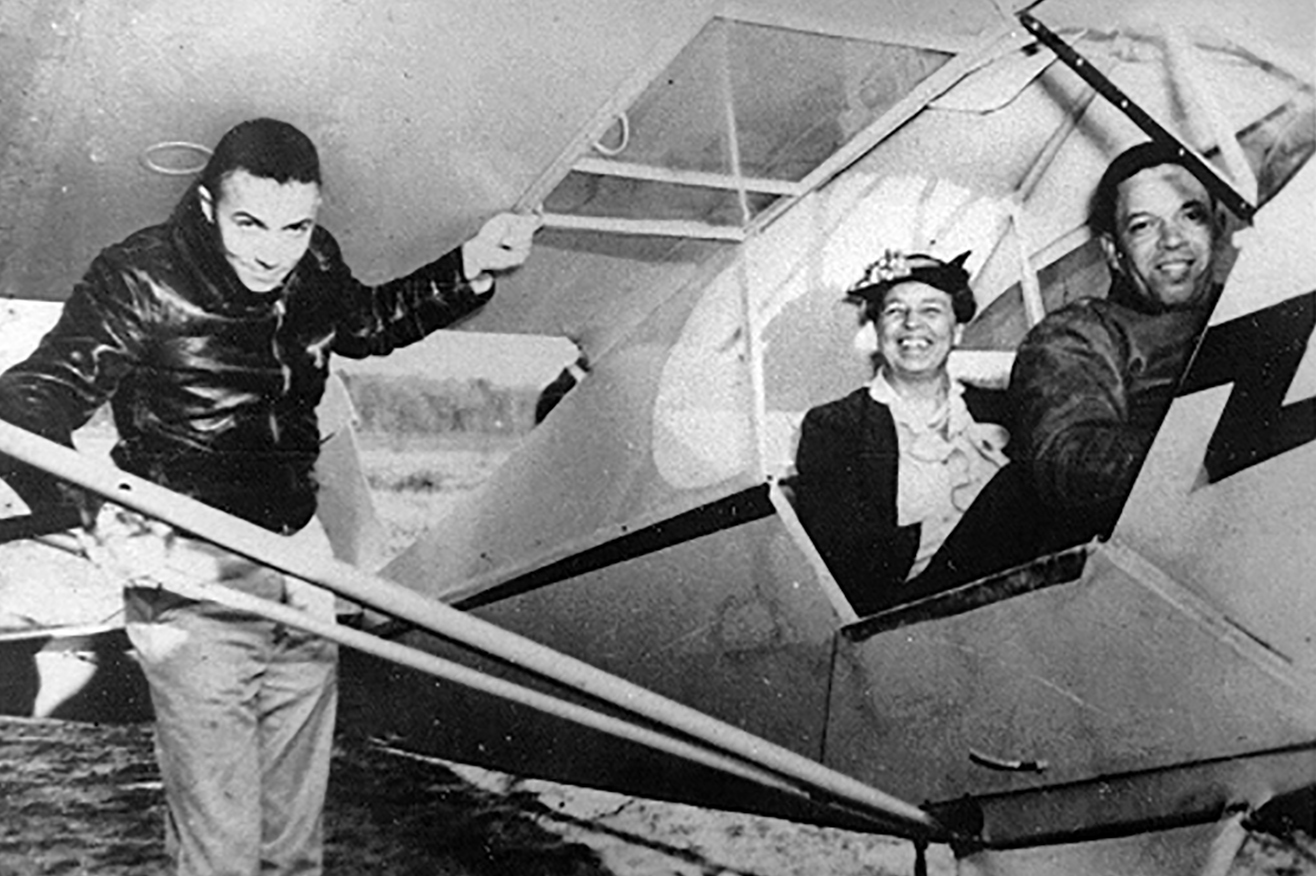
As Tuskegee Institute was gearing up to begin its military training program, First Lady Eleanor Roosevelt paid a visit in March 1941. Here, she is posing in a Piper Cub piloted by “Chief” Charles Anderson, the top instructor in the civilian flight training course that formed the core of the military program then taking shape.
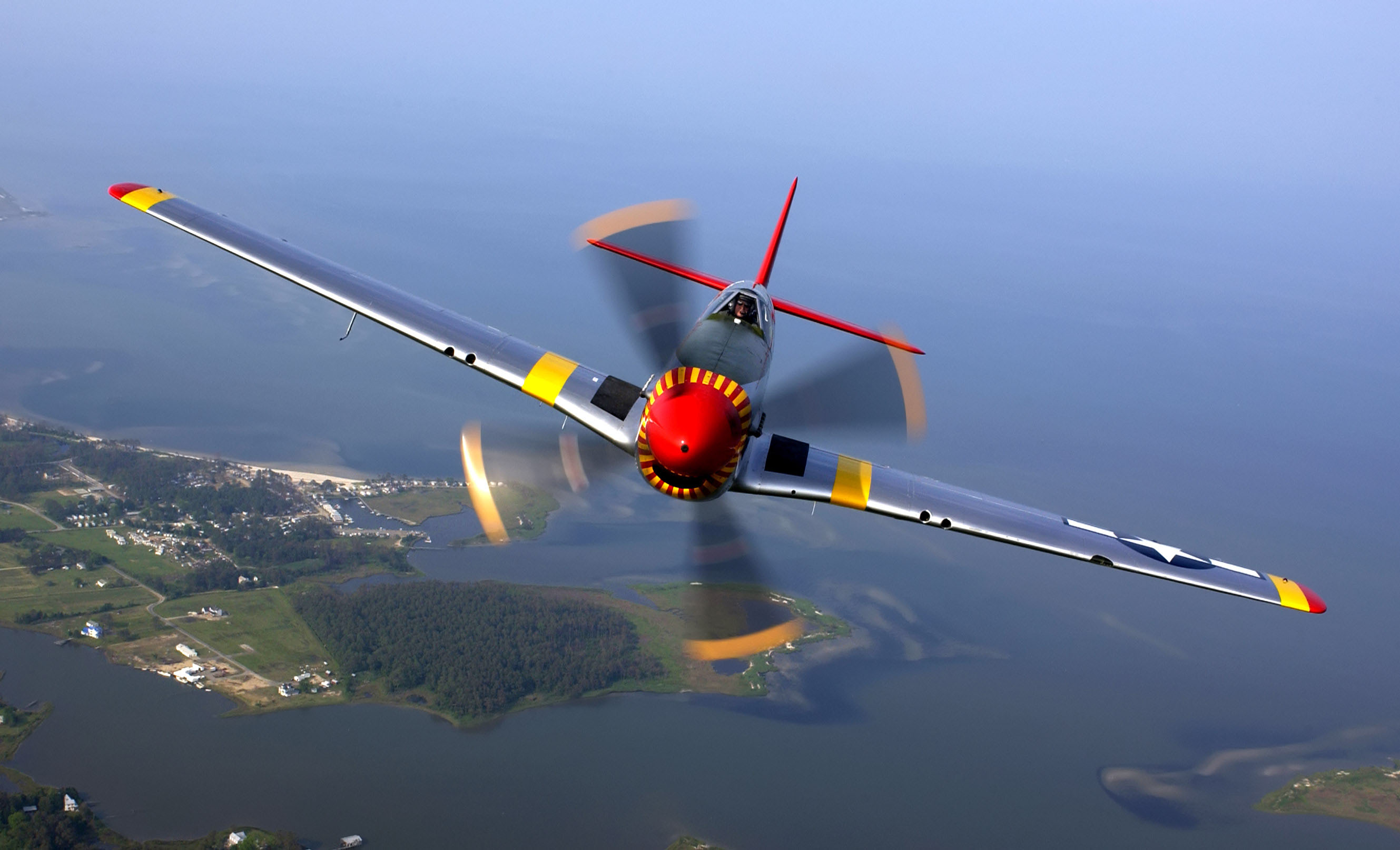
An armorer loads .50-caliber ammo belts on a P-51 being readied for action against German targets in September 1944.
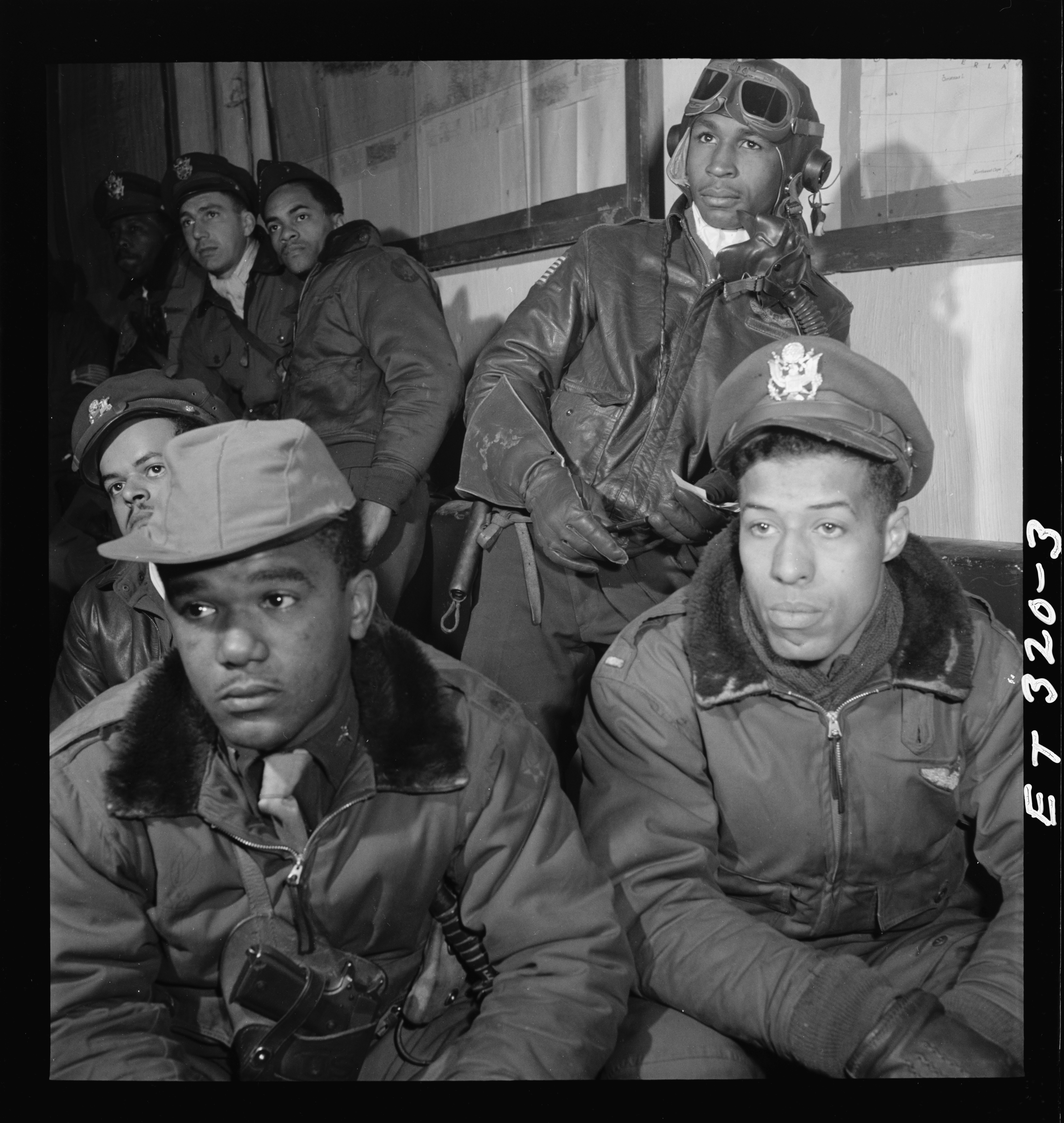
A modern-day P-51 decorated as a Red Tail flies over Langley AFB, Va., in a 2004 Heritage Flight display.
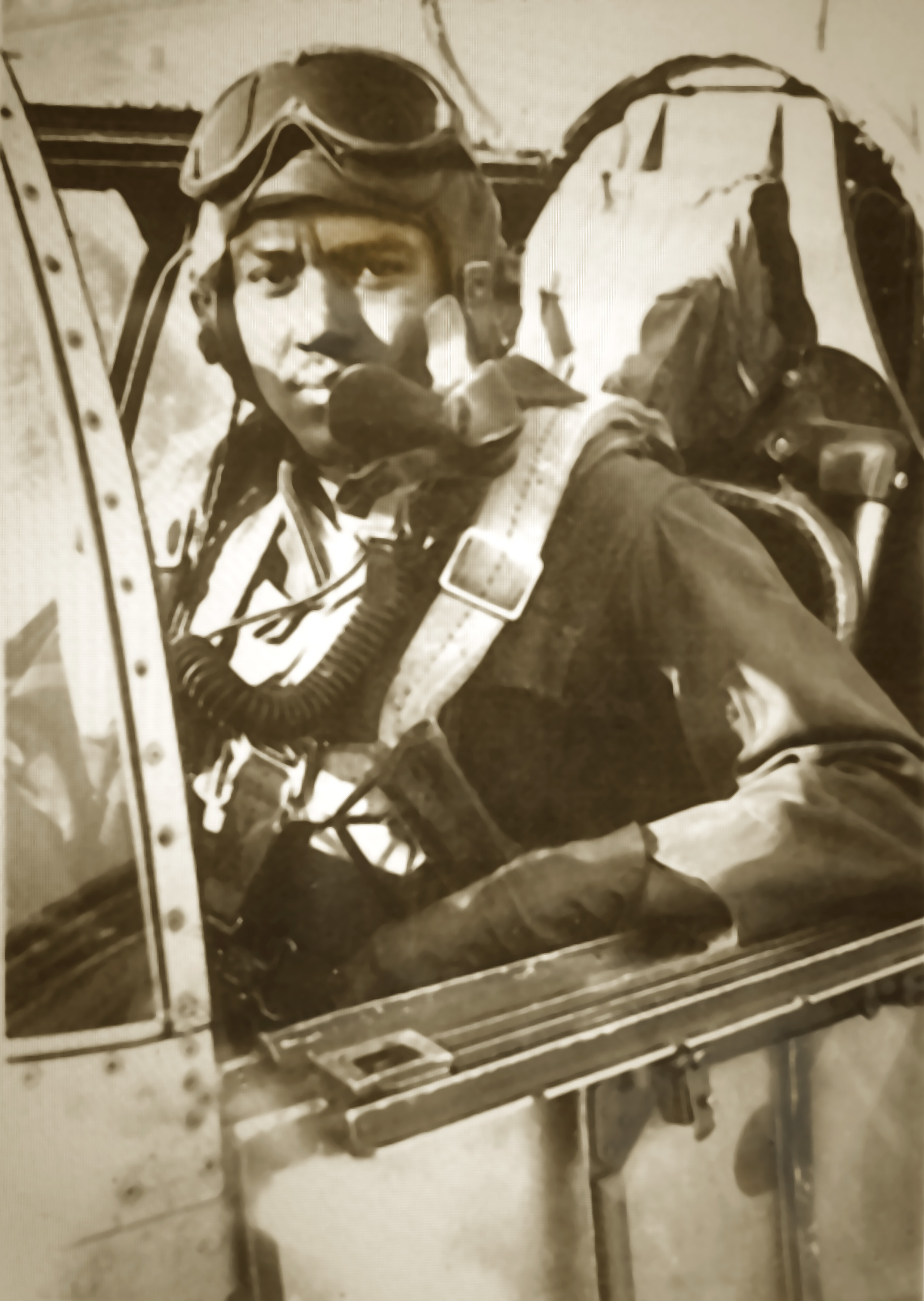
Leo Gray—today a retired lieutenant colonel—in 1945.
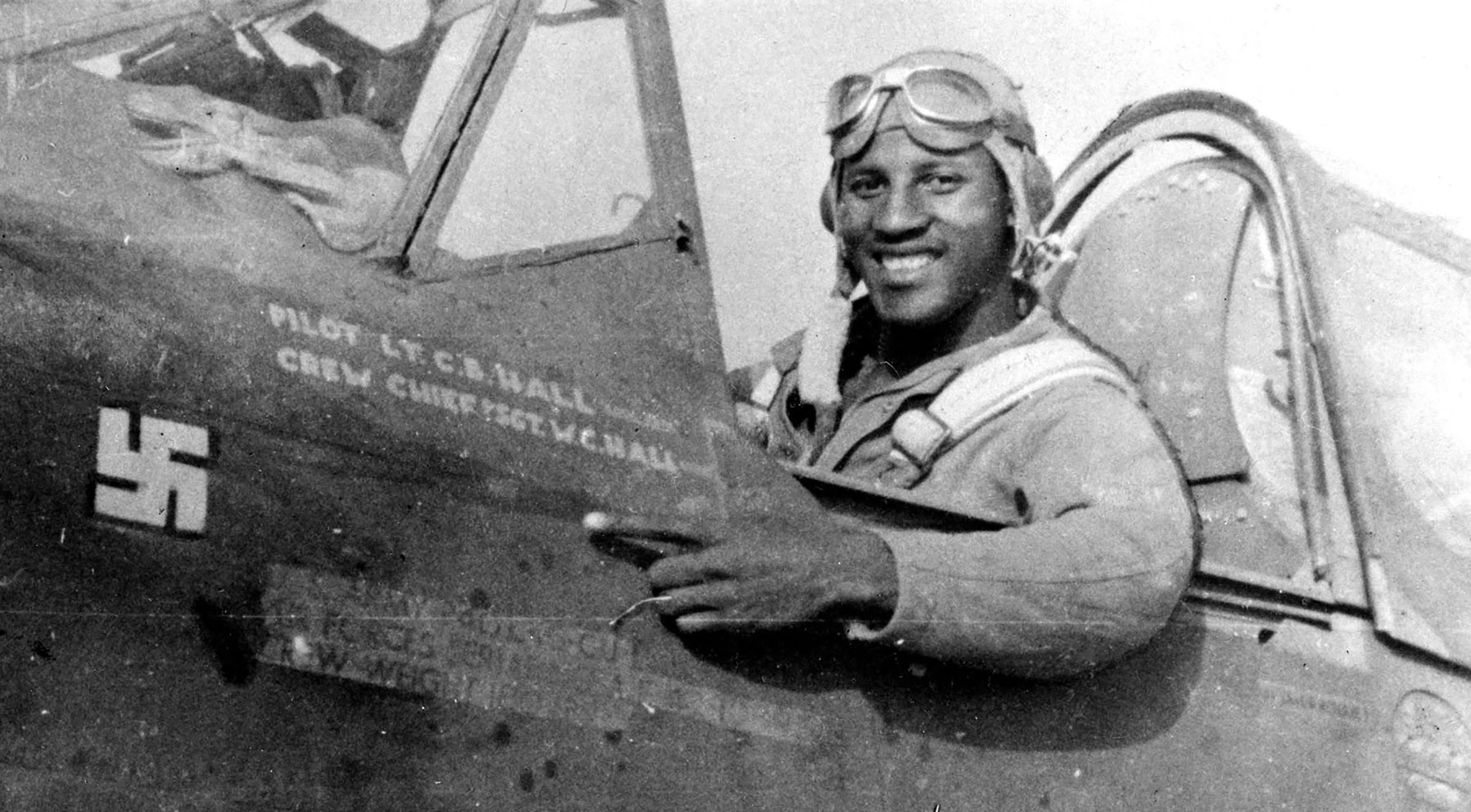
First Lt. Charles Hall points to a freshly painted kill marking on his P-40L Warhawk—the first aerial victory for the Tuskegee Airmen, earned while escorting B-25 Mitchell bombers over Sicily.
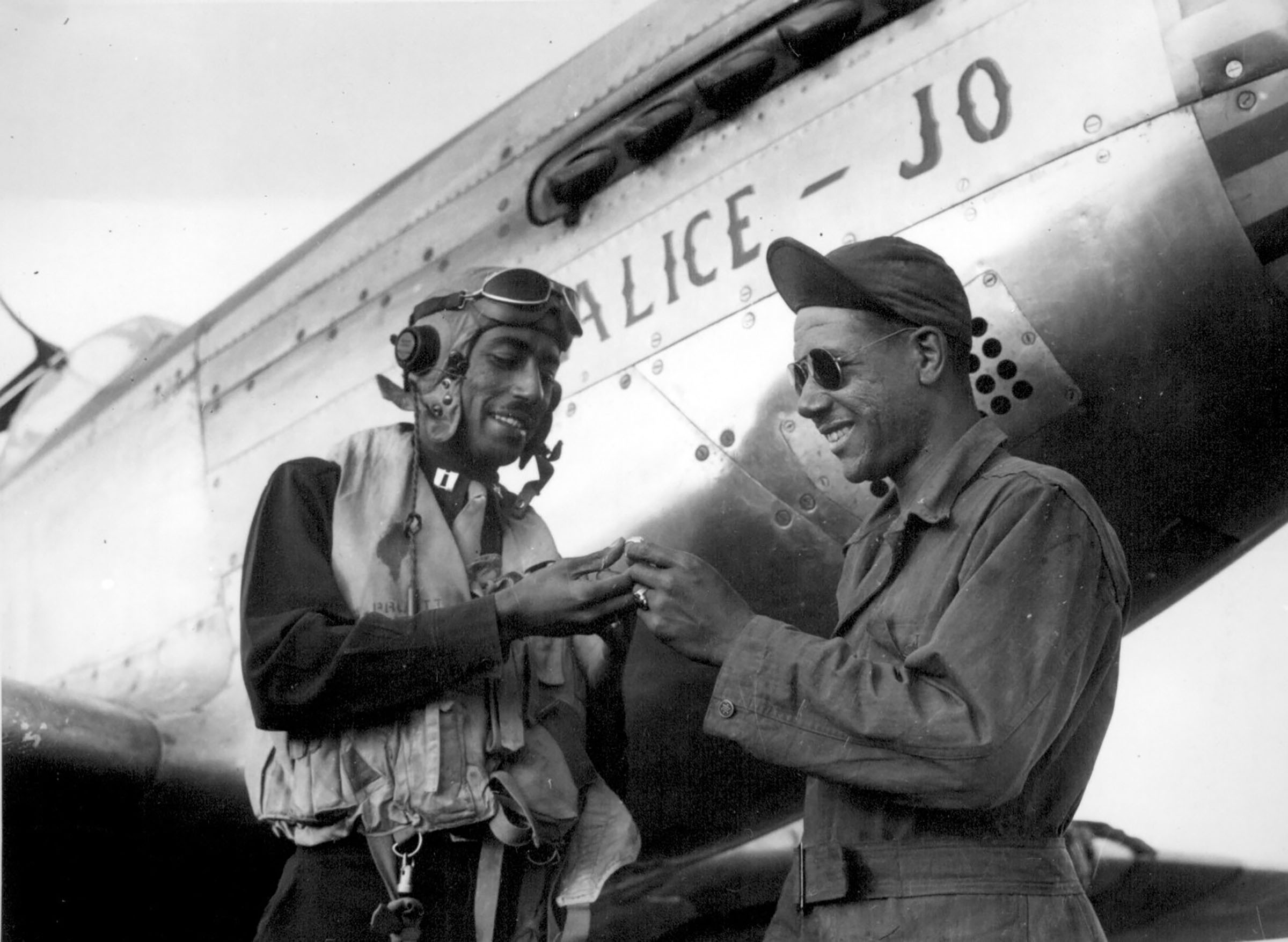
Capt. Wendell Pruitt leaves a ring with crew chief SSgt. Samuel Jacobs for safekeeping before a 1944 mission.
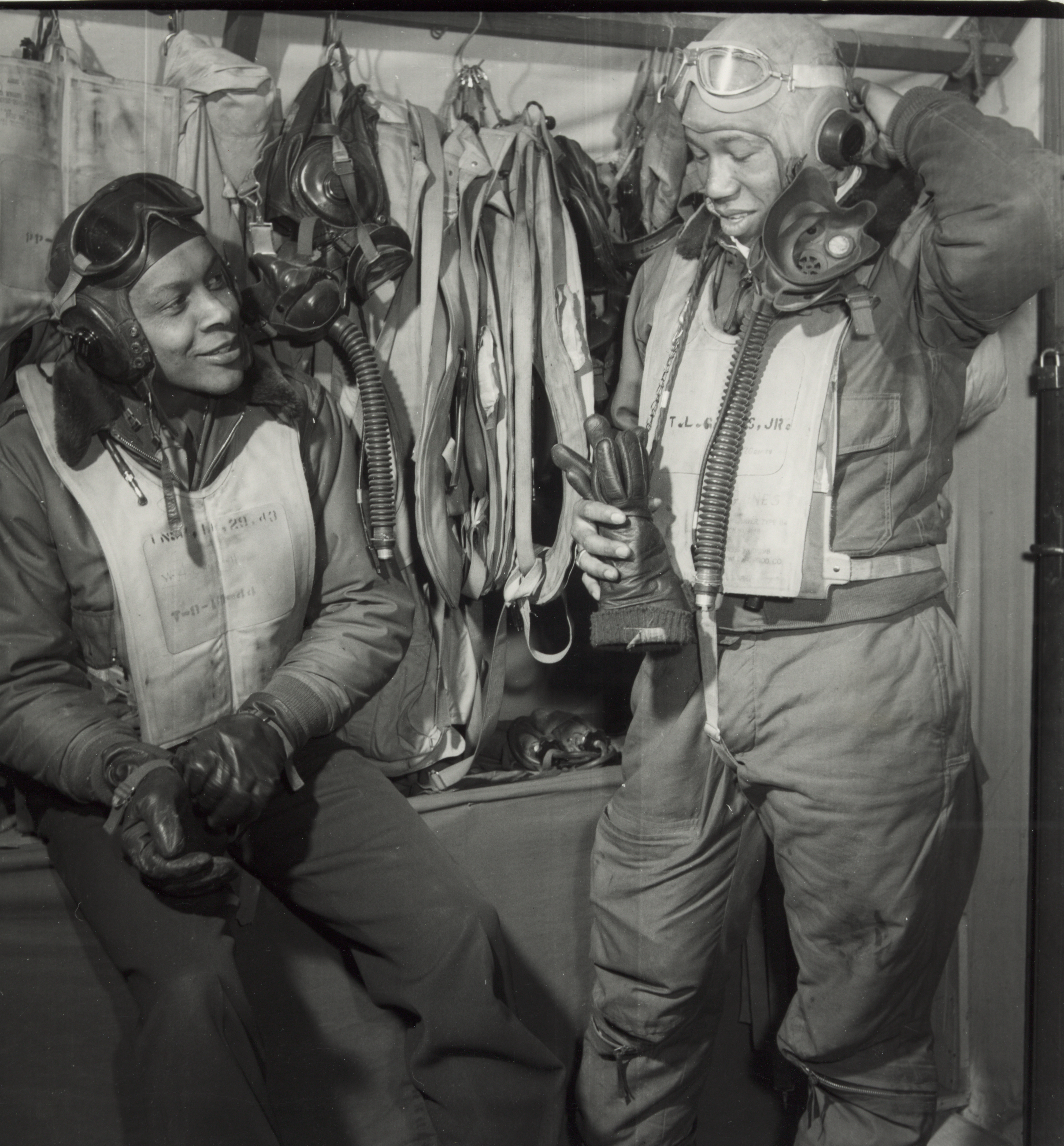
William Campbell (l) and Thurston Gaines Jr. suit up at Ramitelli in March 1945.
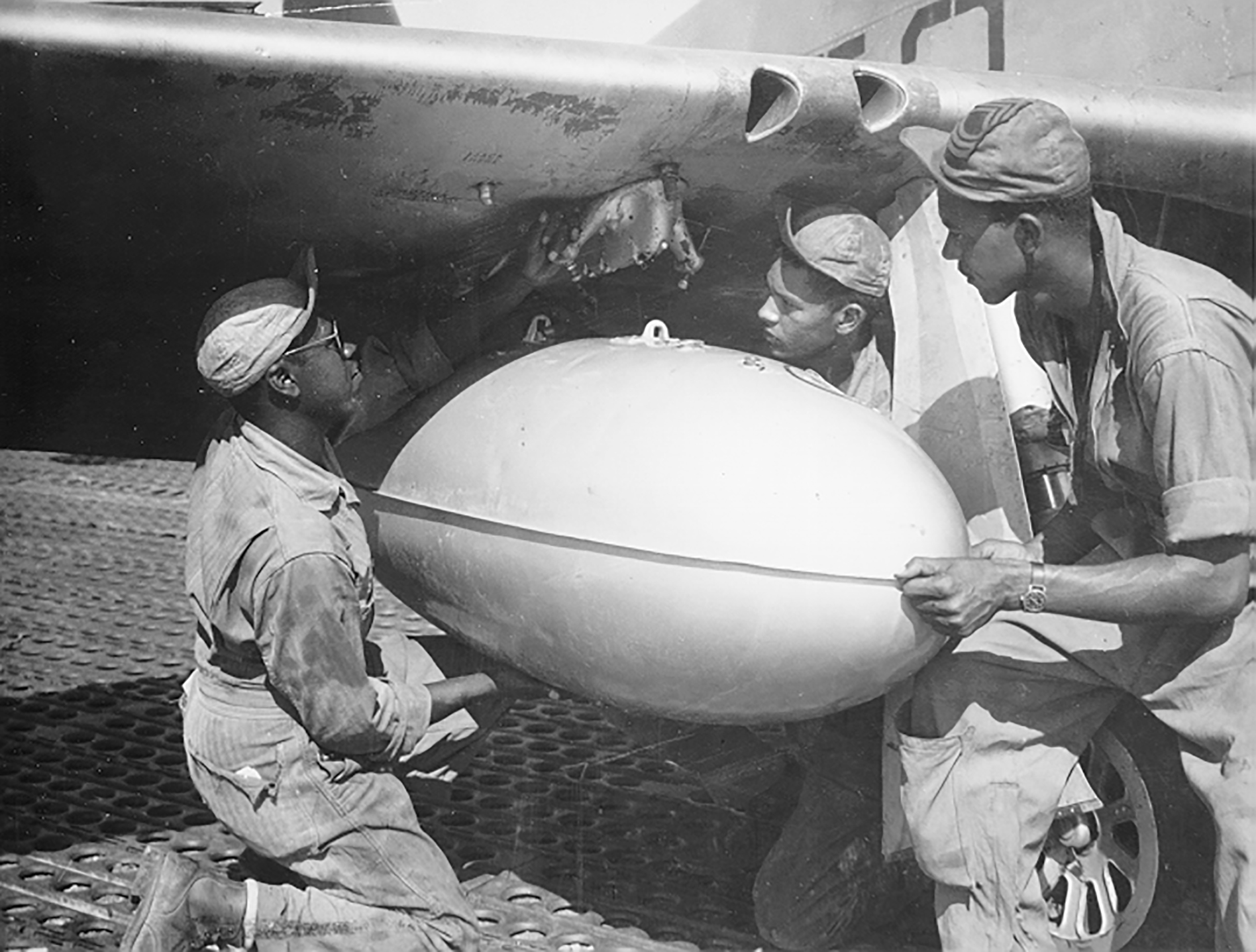
A ground crew installs a fuel tank on a P-51 for a long-range escort mission.
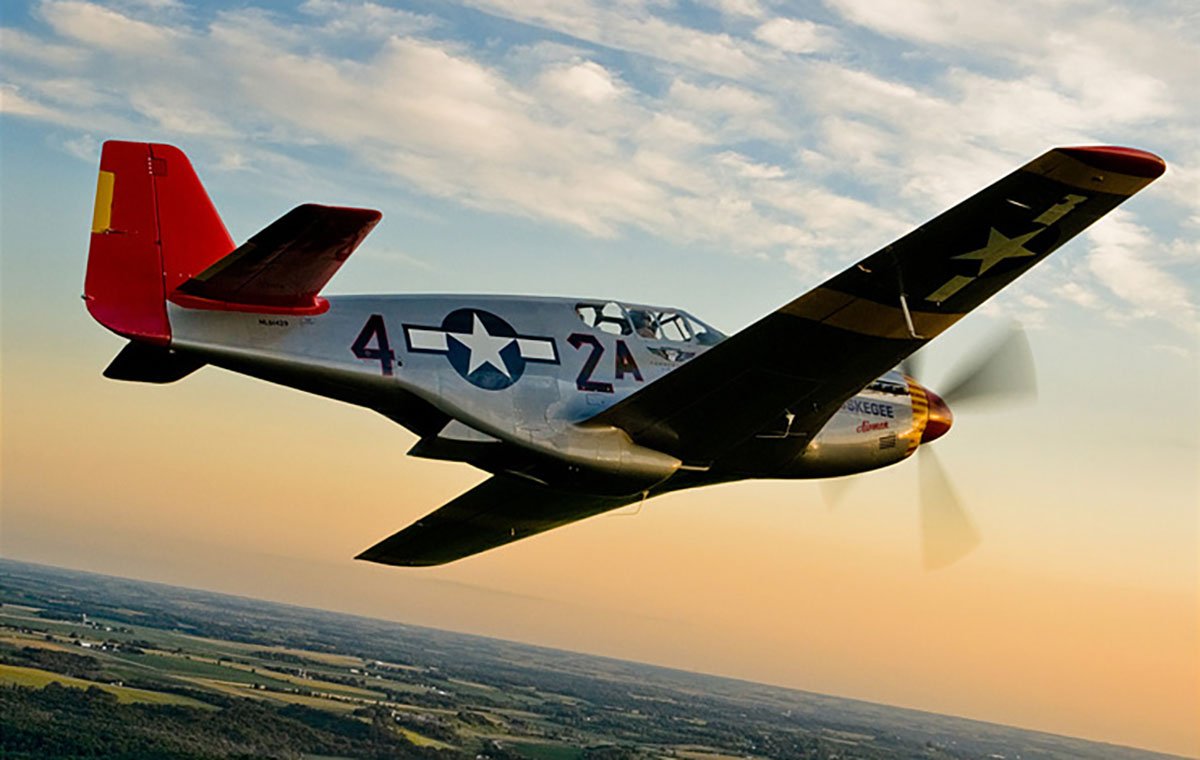
A restored P-51 “Red Tail” named Tuskegee Airmen in a 2009 photo.
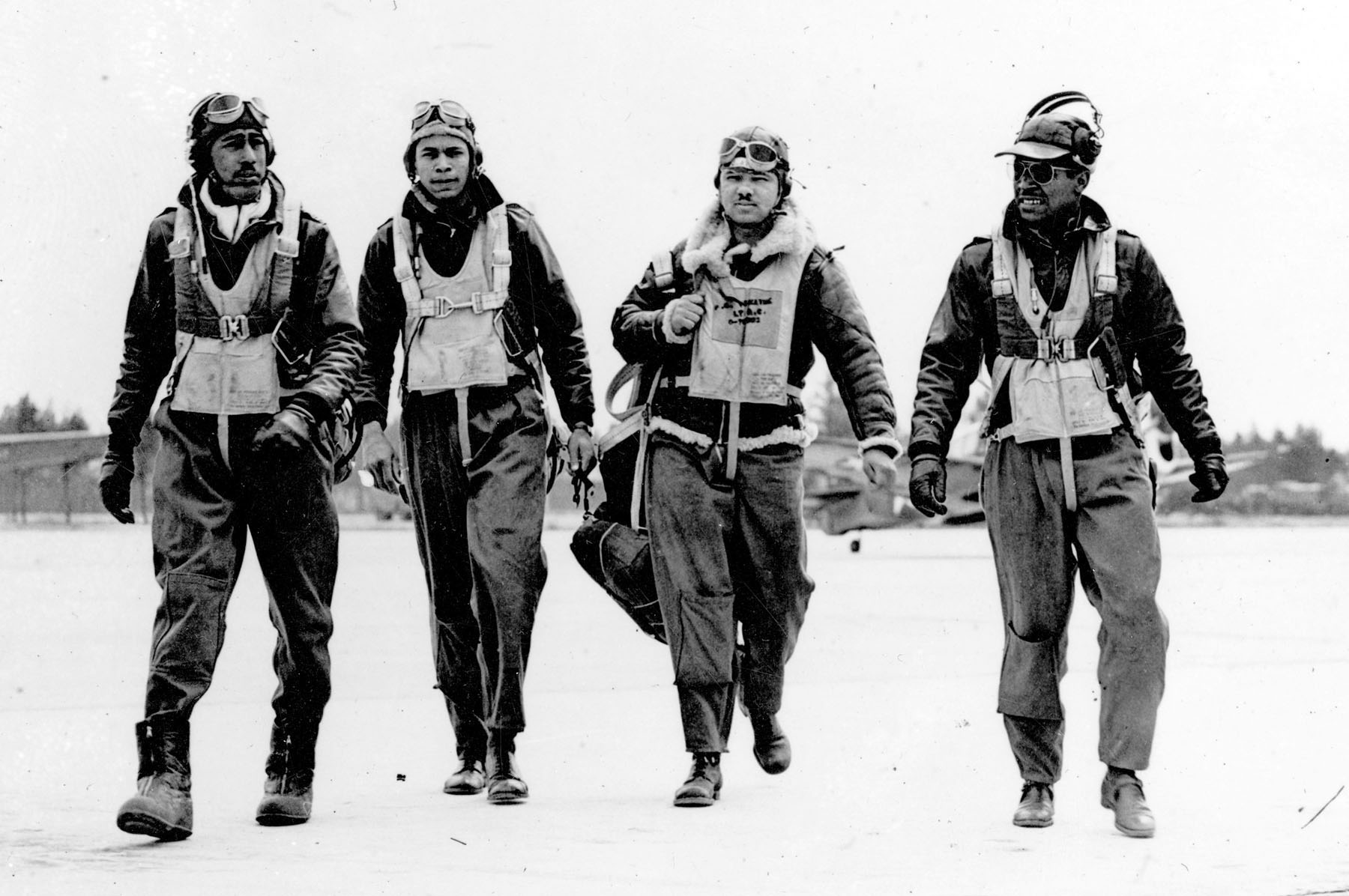
After flying instruction, advanced students went on to learn fighters. Pilot production continued throughout the war, eventually training 685 fighter pilots and 245 bomber pilots. Some 355 Tuskegee pilots deployed overseas, and 81 were killed, some because of accidents. Of those shot down, 31 were prisoners of war. A handful of Tuskegee Airmen deployed to the Pacific Theater as liaison pilots.
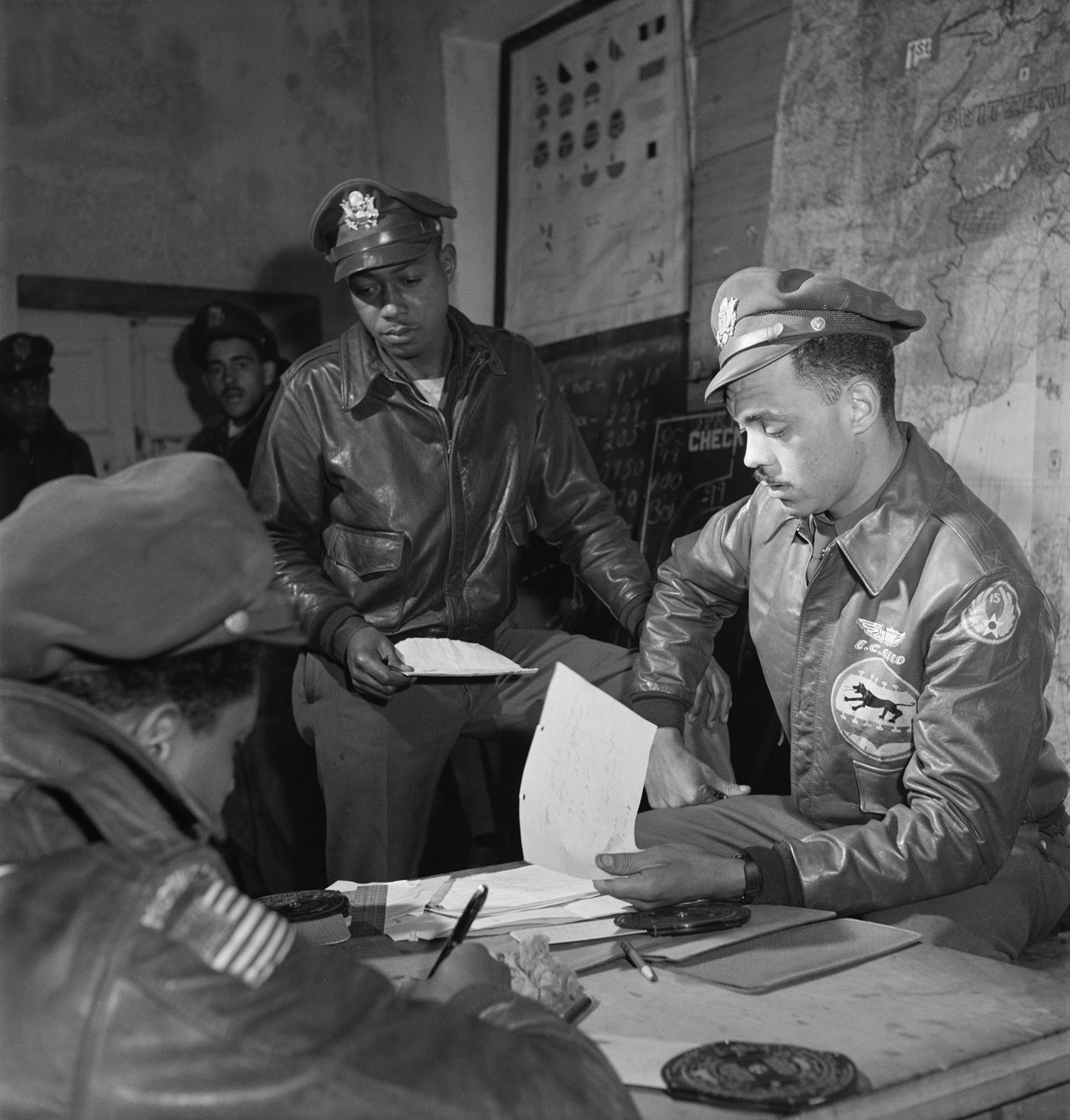
Lt. Woodrow Crockett (left) and Gleed (right) plan a mission at Ramitelli in March 1945. Gleed’s flight jacket was later displayed at the National Museum of the US Air Force in Dayton, Ohio.
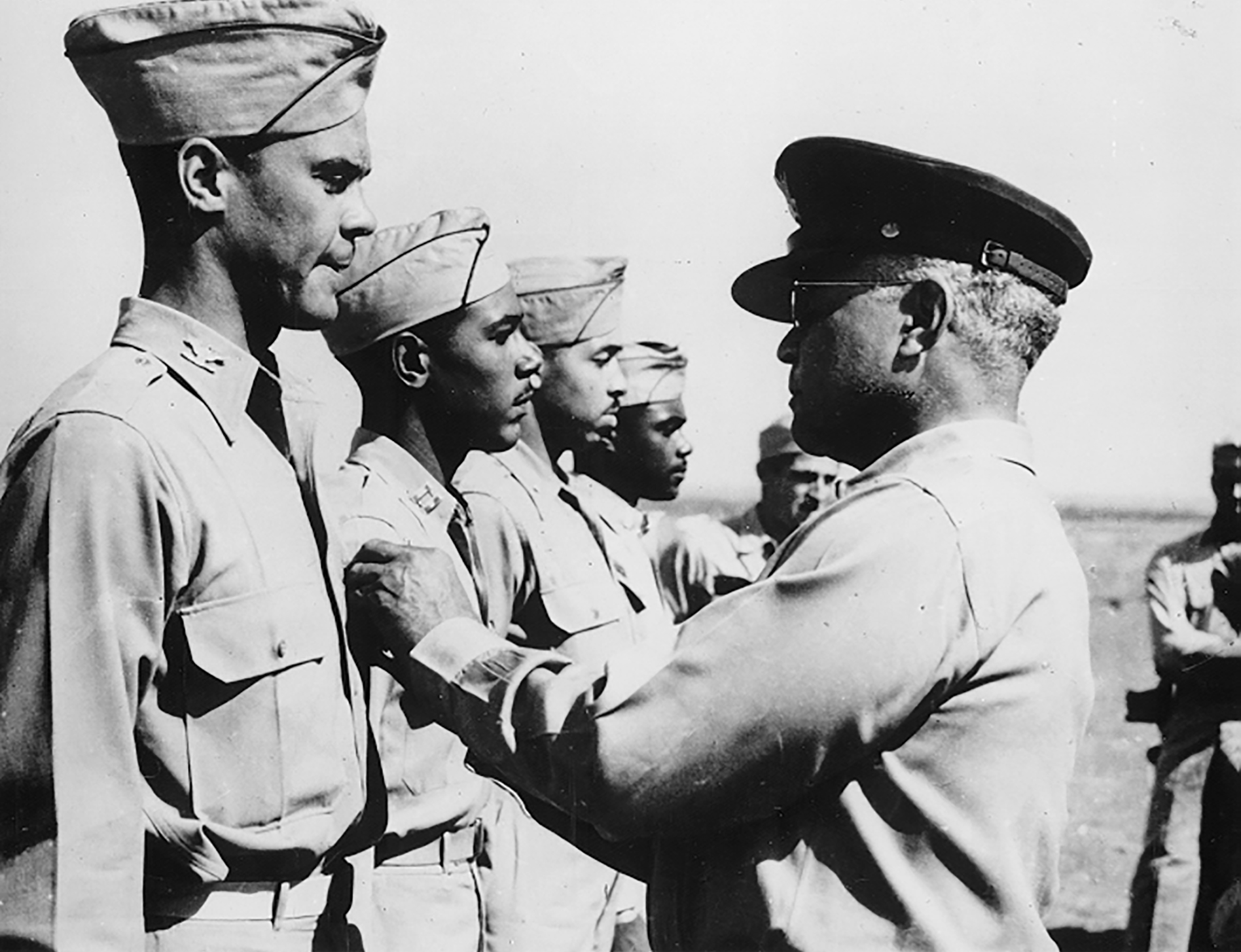
Davis Jr. receives the Distinguished Flying Cross from his father, Brig. Gen. Benjamin Davis Sr., in September 1944. The elder Davis was the first black general in the US Army, and his son became the first black general in the US Air Force. Tuskegee Airmen earned 96 Distinguished Flying Crosses. The Tuskegee Airmen organization recognizes anyone who served with the Tuskegee units or bases between 1941 and 1949 as one of their number. President Harry Truman issued the executive order integrating the US military on July 26, 1948, but most of the services were slow to comply. The Air Force, created in 1947, had already announced it would integrate and became the first to do so, in 1949. Besides Davis, two other Tuskegee Airmen—Daniel “Chappie” James Jr. and Lucius Theus—became Air Force generals. James became the first black four-star general in the service.